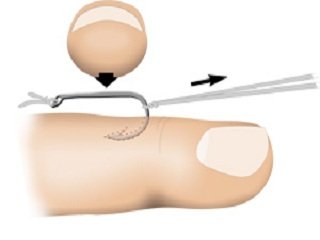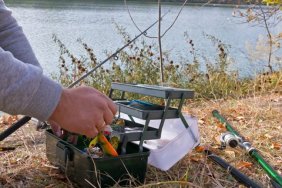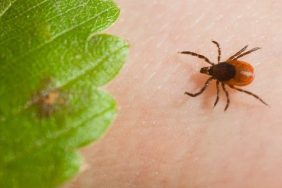 The reason pencils have erasers is due to the simple fact that people make mistakes and accidents happen. Fishing is no exception. Sooner or later, everyone finds a hook lodged in their hand, arm, or any other part of their body. While such an incident is painful, it is rarely life-threatening and can be remedied quickly with common sense and swift, but careful, action. Some are fortunate to have not experienced being hooked, but I wanted to give everyone advice on how to safely remove a hook just in case the situation arises.
The reason pencils have erasers is due to the simple fact that people make mistakes and accidents happen. Fishing is no exception. Sooner or later, everyone finds a hook lodged in their hand, arm, or any other part of their body. While such an incident is painful, it is rarely life-threatening and can be remedied quickly with common sense and swift, but careful, action. Some are fortunate to have not experienced being hooked, but I wanted to give everyone advice on how to safely remove a hook just in case the situation arises.
There are several ways to dislodge a hook, some of which involve specialized tools and kits. However, people rarely plan to be hooked and many times they’re forced to use whatever they have at their disposal to solve the problem. In such a predicament, all you’ll need is disinfectant, heavy monofilament fishing line, and someone to help you.
The first step in removing a hook with as little pain as possible is to thoroughly disinfect the skin around the embedded hook with a cloth and sanitizing solution. This helps reduce the risk of infection.
Next, have whoever you’re with slide the fishing line around the bend in the hook. They’ll need to hold both ends securely with one hand, creating a loop of line around the hook that extends in the opposite direction of the hook’s eye.
Now press the eye of the hook against your skin. Here comes the slightly painful part. Think of it like a Band-Aid: quick and remotely painless. While keeping the hook eye pressed against your skin, quickly jerk the looped line. This will dislodge the hook while minimalizing further damage to your tissue. This method seems like it would be more painful, but really it uses leverage to cleanly and quickly solve the problem.
Of course, if you want to be prepared, there are kits and specialized tools designed to remove embedded hooks, as well. These can be found at any outdoor retailer. If the point and barb of the hook are free of skin—cleanly through and through a piece of skin—you can clip them with pliers and slide the hook right out with no trouble.
Always be sure to thoroughly clean and sterilize the wound after removing the hook, to further reduce the risk of infection, and then secure a bandage over it. If the hook was deeply embedded, it’s advised to see a doctor and make sure there hasn’t been any muscle or nerve damage. Accidents do happen, but it doesn’t mean they have to happen often. The easiest way to help ensure that you rarely have to deal with being hooked is to take your time when working with lures and hooks, and being careful as you work. Try not to tie line to hooks or lures while you’re moving, whether you’re in a boat or just walking, and try not to use rusty hooks either. The one thing worse than hooking yourself is having to get a tetanus shot afterward. Lollipop or not, they’re not fun.








